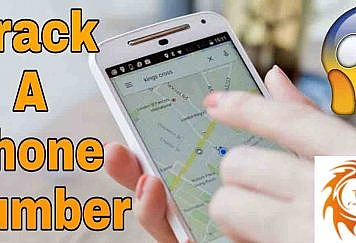A fascinating new tool in event production is projection mapping. Recently, graphics or animation have been projected on the sides of European castles or in high-profile films using projection mapping. The multitude of applications for projection mapping technology in our event productions thrills us.
The act of projecting a computer-generated image onto any surface is known as projection mapping. Although it’s usual to project images onto screens and flat surfaces like walls and floors, projection mapping can also be used to project images onto asymmetrical or three-dimensional objects.
Consider it as painting with light as a means to add color, texture, and movement while also evoking emotions in real-world environments. A fantastic way to create colors, textures, and movement in your space is by adding projections. A fantastic way to bring sets or scenic decor to life in your space is by adding projections.
Elements in Projection Mapping
The crucial projection elements include brightness, color, resolution, processing, and dependability. Each significantly affects the final result.
- The reader is drawn into the story depending on how well a picture “covers” a structure or surface. This is particularly valid if ambient light, such as streetlights or a sunset, is present.
- The hue helps the projection look more enticing and alive. It also helps to hide the color of the surface.
- Since more resolution increases the number of details, it is obvious that the experience as a whole is improved. The desire to see individual pixels is nonexistent.
- The processing quality results in the content playing out smoothly, with no discernible artifacts, and in synchronization across several projectors to give a single canvas.
- The activities involved in mapping projects are real-time even though they can be repeated. A large crowd, sometimes in the hundreds of thousands, arrives and waits for a performance. There is no room for errors or drops in these circumstances. The projectors must be entirely trustworthy and, if necessary, straightforward to modify or maintain.
CONSIDERATIONS OF PROJECTION MAPPING
-
Depth
Not all surfaces are suitable for mapping. In order to give the audience a consistent viewing experience, the projection mapping will be substantially more complicated if the object you are trying to project onto has significant depth changes. Surfaces with few surface depth variations are simpler to create and watch.
-
Duration
Given that projection mapping might involve a significant financial outlay, it is crucial to carefully examine the audience’s experience. Too little or too much content can leave your viewers unimpressed. For mapping programs, keeping material time between five and fifteen minutes tends to be ideal. Of course, other important factors include the general environment, the caliber of the material, and the mapping. A 10-minute show of low quality could seem like an eternity, but a show of good quality might leave your audience wanting more.
-
Direction
It’s crucial to consider the audience’s reaction to the map. Think about the audience’s vantage point and whether or not they will need to move their heads frequently to see the projection. Do they have no trouble following the narrative, and does the audio follow the images? Similarly, you must consider the viewing experience from all sides and angles when projecting onto a 360-degree object. For instance, if you have content on one side, ask yourself whether the audience members on the other side can see it too or whether the content on the other side makes sense to them.
How a Project Can Be Shaped by its Location
A popular draw is still projection mapping onto famous structures. These include bridges, chimney stacks, dams, and the architectural heritage’s crown jewels. Project managers have been able to create displays that are more and more impressive as projectors have grown in strength and dependability. However, the same technology may be utilized to produce more intimate experiences in galleries, malls, fashion shows, or as long-term projections on historical structures.
Creating an Experience through Content Marketing
For projection mapping to be successful, content production is essential. The complexity of your project will help you decide whether your in-house graphics or marketing department can produce the content themselves or if you need to hire a more seasoned firm.
However, after the content is developed, however, mapping it might aid in producing various looks. In a recent project, DWP employed the same content in five cities across the globe, but they put it on various surfaces in each place to get a completely distinct appearance and experience.
The most memorable and significant thing your attendees take away from the event can be projection mapping. Even if your audience doesn’t recall all of the talking heads, the rolling cube that caught fire and turned into an ice cube right before their very eyes will remain in their memory.
Projection-Mapping Technology
Dedicated projection mapping software like Pogumax 3D mapping software brings your concept to life after you select or design an object to be projected. Spatial mapping of a two-or three-dimensional objects is accomplished with this specialist technology. The software simulates the actual environment that the object will be projected onto and may be used to make projection mapping advertisements, tell stories at events, and more. It can work with a projector to project any size or style of the picture onto the ground at your preferred position. By adding additional dimensions or giving the appearance of movement over stationary objects, the software aids artists and advertisers.
Conclusion
Due to the nature of projection mapping, excellent concepts require excellent implementation. The investment is high right now, but so are the prospective gains. For the tools and services to have the greatest impact and to provide dependable, ongoing service throughout time, they must fulfill very high criteria of quality and reliability.
Follow TechStrange for more Technology, Business, and Digital Marketing News.





